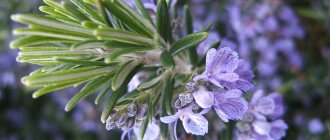- October 29, 2018
- Flowers
- ROME.
Growing calla lilies in the garden is easier than it seems at first glance. Their homeland is South Africa, but with proper care they can be easily grown in other countries of the world in open ground. Callas are able to grow quickly, spreading out like a carpet in the territory allocated to them. However, before planting a plant in the garden, you should find out when this is done and how.
Description of the plant
The above ground part is very beautiful. The plant has large heart-shaped leaves, painted in bright, rich colors, and a shiny surface. The foliage remains decorative throughout the growing season.
It is difficult to take your eyes off the plant during the flowering period. Its long peduncle rises above the graceful foliage. This sight leaves only the most positive emotions, especially today, when breeders have managed to obtain a lot of new colors and varieties of this unusual flower. So, now you can find callas not only white and red, but also yellow, two-color, orange, black, purple and other shades.
Depending on the variety, there are short, medium and tall plants, with a height of 30 to 150 cm. Thanks to this spread, the plant can be planted in various parts of the garden: decorate the edge of a flower bed, plant it in the background, or create a composition of plants so that a calla lily was placed in the center.
For planting and flowering, you can place the flower anywhere, even in the shade. Moreover, it is in the shady zones that the plant produces many flower stalks, while in the sun there are few of them, but there is a lot of green mass.
Types and varieties
In total, there are 8 plant species in the entire genus. Only three are cultivated and used for breeding: Elliota, Rehmann and Ethiopian. If you have already encountered this flower, then it was a variety belonging to one of these species.
Elliot
Elliota, or tuberous stool, is the species with the longest flowering period. But, in order for it to reach its full color, it is necessary to strictly observe some general conditions for cultivation and care. And the most important thing for this is partial shade, nutritious moderately acidic soil and timely watering. Flowering will be poor in complete shade - ideally it is either partial shade throughout the daylight hours, or in the second half.
The root is tuberous, hence the second name, and develops slowly.
Preferences for location and care are very similar to those of hydrangea - so they get along well together. A small but convenient feature - after flowering, the buds do not need to be cut off, they themselves roll up into neat green pods and look like ordinary buds. This does not spoil their appearance in any way.
The bushes grow up to 50cm, the inflorescences are green-yellow on the outside, and completely turn yellow deep into the flower. The most popular varieties: black-eyed beauty, yellow corner, Vermeer.
Remanna
Another tuberous species. The bushes reach 70cm in height and bloom with red-pink and lilac-burgundy flowers - mostly pink or different shades of pink. The leaves are tall and narrow - they are shed before hibernation, when the plant, like a bear, retires until spring.
The most popular varieties are: evening, chameleon and Indian summer.
Ethiopian
Ethiopian, or arum, is the most evergreen perennial in the garden with a developed tuberous root system. The leaves are large, glossy, sometimes spotted (not to be confused with fungal diseases) with translucent spots. The size of the leaf plates is about 20cm wide and 50cm long. A thick petiole runs from the base to the very top in the center of the plate.
Mature bushes reach 80cm and bloom in shades of pink, white, yellow and cream. All varieties, without exception, lose color after pollination and become green.
The most popular varieties are: green goddess, Nicolai, Schone Zweibruckerin and pearl.
Uniqueness of the plant
When growing calla flowers in the garden, it is important to take into account their origin, because the type of underground part - tuber or rhizome - depends on it.
Different types of callas have different growing conditions. The Ethiopian species has a rhizome and all resulting hybrids prefer shaded areas, where there is always high humidity. This species is recommended to be planted near water bodies. In such conditions, the bushes grow in width. Throughout the summer, huge callas will delight you with their blooms.
Another type of flower does not tolerate waterlogging. Sunny areas, partial shade and shade are suitable for them.
When growing calla flowers in the garden, it is worth considering their individual growing seasons. The Ethiopian species sheds its leaves, but there are varieties that always remain green.
Plants are demanding regarding the composition of the soil. They grow only on fertile soil with slightly acidic and acidic pH levels. This composition is extremely rare in gardens. Therefore, the area where it is planned to grow the plant is pre-prepared by laying an acidic substrate. The simplest solution is to purchase special ready-made soil for calla lilies.
Growing conditions
The plants do not make great demands and are very resilient. Callas prefer warm, bright positions in the garden, but not directly in the sun. Botanical species prefer semi-shaded places. During the growing season they require abundant watering and sprinkling.
The choice of soil depends on the type:
- Ethiopian Zantedeschias grow best in neutral or alkaline soil;
- multi-colored hybrids prefer a slightly acidic reaction.
The substrate must be:
- humus;
- permeable;
- constantly moist during growth and flowering.
The optimal substrate is a mixture:
- 3 parts compost;
- 1 part peat.
The industrial cultivation of calla lilies uses a mixture of composted pine bark (70%) and pumice, coconut husks, peat and perlite. Sometimes plants are grown on mineral wool.
Zantedeschias are fertilized with a complex fertilizer every 2-3 weeks, or you can feed them with an organic compound. Callas need to be given a period of rest in a timely manner - this will stimulate the plants to produce new shoots and inflorescences.
After resting, they need to be dried, and after new leaves appear, replanted. Colorful varieties require a very light position.
Temperature
| Time of year and day | Optimal temperatures, degrees C | |
| summer | during the day | 24-28 |
| at night | 16-18 | |
| spring | at night | 11-12 |
| autumn | at night | 11-12 |
In spring and autumn, the temperature at night can drop to 11 degrees, which has a positive effect on the color of the inflorescences. The temperature of the substrate immediately after planting the tubers should not be lower than 15 ºC; in summer it should not exceed 22 ºC. Varieties should not be watered as abundantly as natural species. It is important to maintain moderate substrate moisture.
Planting a plant
Growing calla lilies in the garden requires preliminary preparation of planting material. Country stores offer a large selection of a wide variety of tubers and rhizomes. They are purchased in advance and stored until spring in a dry place at a temperature of 5-7 degrees. At higher temperatures, tubers begin to actively germinate.
When to plant callas in open ground in the spring and how to prepare the tubers? Preparation of rhizomes and bulbs begins in April. First, you should remove all rotten, dried specimens. All high-quality tubers are treated with a fungicide and planted with the tubercle up in flower pots for germination. The container is filled with nutrient substrate. The tubers need to be buried a couple of centimeters. Sprouts appear at a constant temperature of 20-22 degrees.
Before planting the tubers in the garden, the plants are hardened off. To do this, they are taken out to the balcony, terrace or garden every day for a few minutes. Every day the time is increased.
With the onset of warmth, hardened plants are planted in open ground, maintaining an interval of twenty centimeters. Medium-sized callas are planted at a distance of forty centimeters from each other, and tall ones - half a meter.
When transferring calla bulbs from a pot to a planting hole, you should be careful not to damage the root system. After transshipment, the rhizomes are watered.
You can plant plants without prior germination. This is done as soon as the threat of return frosts has passed. However, this method does not allow you to enjoy early flowering.
When calla lilies bloom in the garden
On heavy clay and silty soils on damp, periodically drying meadows, along river banks in South Africa (Cape region).
Photo by Svetlana Polonskaya
Perennials with thick rhizomes, annually forming a large number of leaves and several flowering stems. Leaves with petioles 0.5-1 (1.5) m long. The leaf blade is light green, heart-shaped-arrow-shaped with a blunt or slightly pointed apex, 15-45 cm long and 10-13 cm wide; the length of the anterior lobe is more than 1.5 times the width; The lateral lobes are rounded, 3-4 times shorter than the anterior one. Flowering stem about 1 m tall. The spathe is 10-25 cm long, funnel-shaped, with a short tube at the base and a pointed, somewhat elongated apex, white. The cob is cylindrical, yellow. The flowers are unisexual, without a perianth. In the lower part of the spadix there are pistillate flowers, above there is a zone of anther flowers, which is 4 times longer than the pistillate part of the spadix. The berry is ovoid, yellowish in color. 2n=24. In culture since 1687. Widely known as “calla” or “cantedeshia”. On an industrial scale, it is grown for winter cutting in greenhouses with planting in ridges or hotbeds for the summer.
For abundant flowering, plants need a period of rest (from mid-May to the end of July), so watering is greatly reduced; in July-August they are transplanted into large pots or greenhouse soil in a nutritious mixture of clay turf soil with humus, after which the watering is increased and the plants are regularly fertilized alternately with mineral and organic fertilizers. The air temperature in greenhouses in the fall should be 8-10°, with the beginning of flowering it is recommended to increase it to 12-15°. Numerous hybrid forms and varieties are usually cultivated; the most common variety is Perle von Stuttgart (Pearl von Stuttgart) with large inflorescences.
In addition to Z. aethiopica, Z. elliottiana
(Knight) Engl. is sometimes grown.
with yellow inflorescence spathe and
Z. rehmannii Engl
. with a pink blanket.
Further from the article by Tatyana Smirnova “Feel free to release calla lilies into the garden” // “Flower Club”.
It is not surprising that amateur flower growers still cannot tame the capricious calla lily.
Collecting information about the culture of these plants, we discover contradictions even in the most authoritative publications on floriculture. What kind of riddles are these? Photo by Natalia Kozlova 'Mozart' Photo by Andrey Ganov
Comments
| Last September I was in the south and bought white calla lily root in Temryuk. The seller advised me to plant the calla lily in a small pot. It grew in a pot all winter and was planted in the dacha in the spring. but it still hasn’t bloomed for me. It’s already the end of September and there are still no flowers. What did I do wrong? Probably because she didn’t let him rest? Please tell me what to do correctly and, most importantly, preserve it so that at least next year I can see it blooming. Krasnoyarsk |
Hello people! I have a wonderful story with calla lilies: I bought the nodules four years ago. For two years they bloomed, as was photographed in the picture, with dark purple flowers. Very elegant. And last year the flowers brightened a lot - they became bright pink! Well, this year it’s almost white! I grow it in a container. They look great - no oppression is noticeable. When growing, I add “acids” to them when watering. I store it in a dry basement in a cardboard box in winter - the temperature is about +5 degrees. I looked for reasons in various sources - I couldn’t find them. M.b., does anyone know what’s wrong and is it possible to return the “purchased” color? Yes, the leaves have also become longer and larger in size. But these may be cultivation errors... Please, knowledgeable people respond. Thank you in advance! Good luck to everyone in growing flowers (and not only...).
Off topic, but.. To Ekaterina’s comment. ". scale insect It only lives in indoor conditions, so maybe that’s why when you plant it outside the scale insect dies.” Off topic, but.. This is, to put it mildly, a misconception. Scale insects are a common pest of open ground.
Source
Features of care
Callas are demanding on growing conditions. Ethiopian species require regular watering. Other types cannot be filled in. How to water callas at the beginning of growing? Typically, young plants are watered only after they have taken root in the garden bed and begin to sprout new leaves. Until this moment, no watering is carried out, although if the soil dries out too much, it won’t hurt to water the flowers a little. In the future, they are watered 1-2 times a week or more often (the degree of watering and regularity depends on weather conditions, soil type and plant type). Ideally, you should not allow the soil to become waterlogged or dry out.
After watering, the soil is loosened, preventing the appearance of a hard crust on the surface. Be sure to remove weeds. To reduce the amount of loosening and simplify the task of growing, some gardeners deliberately release earthworms into the bed with calla lilies. They enrich the soil with humic compounds and loosen under the roots in a natural way.
Feeding
Every gardener should know how to feed callas for abundant flowering and how to do it correctly. To form a lush bush with a large number of peduncles, the plant needs high-calorie nutrition. Usually, in the spring, a special soil mixture for calla lilies is added to the garden bed, which contains the necessary nutrients, as well as forty grams of complex mineral fertilizer for each square meter of soil. With this option, subsequent fertilizing is not carried out.
In other cases, it is necessary to carry out additional feeding once every two weeks. For this purpose, fertilizers intended for tuberous or bulbous plants are used. The solution is prepared according to the instructions.
When applying fertilizers, it is worth limiting the concentration of nitrogenous fertilizers, as they negatively affect flowering and only contribute to the growth of green mass. But to stimulate the production of flower stalks, the bushes are fed with potassium fertilizers. Potassium is added in the form of a solution, at the rate of a spoon per bucket of water. Water the plant carefully at the root.
If the soil in the selected area is alkaline or neutral, then it is worth periodically acidifying it by pouring acidic water (to prepare the solution, dilute vinegar essence or citric acid in water).
How to grow frost-resistant callas in your garden
When talking about callas, you immediately imagine snow-white, huge, regal flowers on long thick stems. They seem to have been carved from ivory by the finest chisel of some talented sculptor.
A bouquet of such calla lilies is an integral attribute of a wedding, anniversary or some other significant holiday.
And, of course, not a single gardener would even think of growing these greenhouse sissy flowers in his garden. And rightly so.
After all, these African beauties originated from the rhizomatous Ethiopian , which in our climate (even in the south of the country) can only be grown in protected soil. Therefore, today we will not talk about them.
But besides the Ethiopian , there are two more types of colored calla lilies - yellow Elliott and pink Remani . Both of these species belong to tuberous plants.
The varieties bred with their participation grow and bloom well in conditions of short summers and short-term May and June frosts in most regions of our country.
Their agricultural technology is in many ways similar to that of dahlias. In the same way, gardeners dig up tubers of colored calla lilies in the fall and store them until spring, so that they can plant them in their garden next summer.
Today we will talk in detail about how to grow colored callas on your site, taking into account their individual properties and biological characteristics.
FROM THE HISTORY OF CALL CALL DISTRIBUTION
South Africa is considered the birthplace of all calla lilies. During the Boer War, they were brought to England, and from there they came to other countries in Western Europe.
Ethiopian callas were grown in royal greenhouses, but the tuberous callas Elliott and Remani were of great interest to English and French, and later Dutch breeders.
It was they who became the progenitors of all modern frost-resistant multi-colored varieties, which today are successfully grown in European countries, even in such northern ones as Sweden, Norway and the Netherlands. A huge variety of colored calla lilies can be found in gardens and parks in the USA and Canada.
Colored callas are also grown in our country. Several domestic research institutes are engaged in their selection, creating wonderful, very beautiful and stress-resistant varieties for the northern regions of Russia.
BIOLOGICAL PORTRAIT OF COLOR CALLA LALAS
Colored callas are sophisticated, delightfully beautiful tuberous plants ranging from 50 to 70 cm in height.
What we think of as a flower is actually an overlying colored leaf (a large funnel-shaped bract called a “spathe”) of a wide variety of colors, inside which there is an inflorescence in the shape of a spadix or candle, consisting of many small yellow flowers emitting an unusually delicate vanilla-magnolia aroma.
Calla lily flowers with a cover, depending on the variety, can have different shapes and sizes. They come in one, two and multi-colors, and literally dazzle and fascinate with the riot and brightness of colors.
The leaves of calla lilies are glossy, elongated, bright green with white speckles. They organically complement the amazing and unusual beauty of the flower.
Tuberous callas are characterized by long-term flowering and can decorate flower beds in your garden from mid-June to the end of September. With their beauty and grace, callas can outshine any of the most beautiful flowers in a formal flower garden.
These plants are quite unpretentious, tolerate summer frosts well, and are not afraid of sudden temperature changes and prolonged rains.
Anyone, even a novice gardener, can easily grow these amazing flowers in their garden.
HOW TO PLANT AND GROW CALL LIAS
Landing dates . Calla lily tubers are planted in flower beds after May 18, when the ground at a depth of 14 cm warms up to + 15 degrees. The blooming yellow dandelion flowers will “signal” this to you. If they bloom, you can safely start planting.
Landing place . Callas will grow well and bloom brightly only in a very sunny place, so make the flower bed in a well-lit place, protected from drafts and cold winds.
Lowlands and areas flooded with rainwater are not suitable for callas. They also do not tolerate close groundwater. Therefore, plant callas in flower beds at least 50 cm high.
Soils. Callas are very fond of loose, organic-rich, well-water and breathable neutral or slightly acidic soils. They will not grow on heavy and acidic soils.
Acidic soils must first be neutralized with dolomite flour (at the rate of 2 kg per 6 sq. m. flowerbed).
When creating flower beds for each square. m, add: 2 buckets of compost, leaf soil, river sand, a bucket of peat, half a bucket of wood ash, as well as 2 tbsp. spoons of double superphosphate and 2 tbsp. l potassium sulfate.
Landing . Before planting, soak calla lilies tubers in a medium-raspberry solution of potassium permanganate for 2 hours.
Plant the plants in flowerbeds at a distance of 50–60 cm from one another, burying the tubers 3–4 cm into the ground.
After planting, water the entire flowerbed well with warm water at the rate of 2 watering cans per 1 square meter. m. After watering, mulch all plantings with straw or peat chips with a layer of 5 cm.
If you bought calla lily tubers in early spring, then in March you can plant them in pots in the same way as mentioned above, and transplant them into flower beds in May.
Watering . It is simply necessary for moisture-loving callas. Water them 2-3 times a week at the rate of 1 watering can per 1 square meter. m flower beds. In hot weather, water every day.
Fertilizers . For abundant bright flowering, the nutrition received during planting is not enough for callas. These flowers require regular feeding.
Once every 3 weeks, feed callas with a fertilizer solution for tuber-bulbous plants in the dosages indicated on the package. Before and in the middle of flowering, give your flowers potassium sulfate or potassium magnesia (at the rate of 1 tablespoon per 1 sq. m of flower bed).
Potassium promotes more abundant and lush flowering of callas. But it’s better not to give nitrogen fertilizers, otherwise instead of beautiful flowers you will get a huge green bush of leaves. Callas are very responsive to nitrogen, which is expressed by the immediate growth of green mass.
Loosening . For normal growth and development of callas, their roots need a lot of oxygen. Therefore, loosening a flower bed is one of the most important agricultural practices.
Loosen the flowers after each watering or rain along with a mulch layer, and then add fresh mulch (straw, hay, peat chips).
The mulch layer will protect plants from the formation of soil crust, prevent the growth of weeds and prevent the evaporation of moisture from the root layer.
Preparing for winter . Carefully cut off all fading flower stalks immediately after flowering to give room for new growth.
At the end of September, begin preparing your plants for winter. When the flower stalks and leaves turn yellow and fall to the ground after the first hard frost, carefully cut off the entire above-ground part, leaving a few leaves.
This must be done so that the remaining nutrients from the above-ground part flow into the tuber.
In about two weeks. Dig up the tubers, wash them, dry them and store them like dahlia root tubers.
Read more about our published articles:
THE BEST VARIETIES OF FROST-RESISTANT CALLA FROM OUR COLLECTION
We told you how to grow frost-resistant colored callas in your garden. Now we offer you the most beautiful, long-flowering and disease-resistant varieties from our collection:
In addition, we offer you an amazingly beautiful set - TEMPTING , consisting of four multi-colored calla lilies (dazzling white, orange-red, dark purple and white-violet).
You can read more about these varieties on our website or in the SPRING 2021 catalogue. And you can order them there today!
Source
Reproduction
Flowers can be propagated in various ways. This is usually done by tubers, dividing the bush or seeds. The last method is considered the most unreliable and time-consuming. The easiest way to divide the bush is in the fall, when calla lilies are dug up. To do this, after digging up the plant, a shoot with part of the rhizome is separated from it. The delenka is planted in a container with a previously prepared substrate for calla lilies and stored that way. With the onset of spring, the young plant is planted in open ground. There are species that easily reproduce from bulbous children.
After flowering
Bulbs and rhizomes are cared for differently. In the latter species, the dormant period is observed in the summer. At this time, the flowers begin to grow slowly, then stop growing altogether, beginning to change the color of the leaves. At this point, watering is stopped. How to transplant calla lilies and when, if they are dormant in the summer? At the beginning of July, the plant is replanted, during which all old leaves and shoots are removed and the soil is replaced.
When are calla lilies dug out in the fall and how are they prepared for storage? These types of flowers are dug up in mid-late September. The tubers are dried and stored in a cool place. The flowers should be dried together with the above-ground part, without removing it. During the preparation of bulbs and rhizomes for storage, all accumulated nutrients from the leaves will pass into the roots. As soon as the above-ground part withers, it is removed, the bulbs are stored in a cool place, observing the temperature regime.
Storage of planting material
In mid-latitudes, callas cannot overwinter in open ground, so they are dug up and prepared for long-term storage. When should you dig up calla tubers for storage and how to store them?
In September, the bulbs and rhizomes are dug up and prepared for further storage. Immediately after removal from the bed, the underground part of the plant should be disinfected by dipping the rhizomes into a solution of potassium permanganate for thirty minutes. Then the dug up plants are placed in a dark place until the above-ground part withers. Afterwards, the dry foliage is removed, and the bulbs and rhizomes are placed in paper bags. You can wrap them in newspaper. The material should be stored at temperatures up to 7 degrees. If there is no cellar or basement, then it is best to place the bulbs in the vegetable drawer of the refrigerator.
Planting material should be checked every 1-2 weeks. So, with high humidity it can begin to rot, and at high temperatures it can dry out.
Young cuttings planted in pots should be left in a container for the winter and taken out to the balcony or other cool place.
Which bulbs to buy?
It is best to buy bulbs in the spring, then the quality of the material will be the highest. From a botanical point of view, the bulbs of Ethiopian calla lilies are rhizomes. They have a vertical structure - the roots grow from below. The fleshy roots are short in size.
The underground part of colored zantedes is also formed by rhizomes, but they have a disc-shaped rather than vertical shape. Biennial rhizomes have an irregular shape, but are distinguished by the greatest energy. Over the years, the rhizomes begin to grow in a circle. resembling flattened tubers.
Interesting! On the bulbs, some of the eyes remain dormant. You will need to use a gibberellin solution to stimulate their growth.
When purchasing, it is important that the bulbs are healthy. We are often fascinated by suspiciously low prices. And then we observe that the bulbs do not grow or the callas do not bloom. Bulbs that are stored for a very long time simply dry out and become useless. When purchasing, the criterion of elasticity and juiciness of the onion is important. After purchase, another important point is compliance with the storage conditions of the bulbs.
An onion suitable for planting should be large, dense, and resemble a potato tuber. A wrinkled, dented bulb will not grow into a normal flowering bush. Damaged and rotten bulbs are discarded for treatment. The selected rejects are placed in trays and transferred to a cool room with a temperature of 5-7ᵒC, regularly ventilating.
Flowering problems
Quite often, gardeners are faced with a problem: calla lilies do not bloom. In order for the plant to delight with beautiful flowers, you must follow several rules:
- monitor the degree of penetration of the bulb and rhizome;
- Avoid excessive application of nitrogenous fertilizers;
- faded flower stalks should be removed without affecting the young shoots;
- The plant needs to be planted in an area where there is enough light (it is recommended to plant some species in the shade).
In order for calla lilies to grow and delight with their beauty, watering should be carried out correctly. Typically, manufacturers indicate the degree of soil moisture and other care requirements on the packaging.











